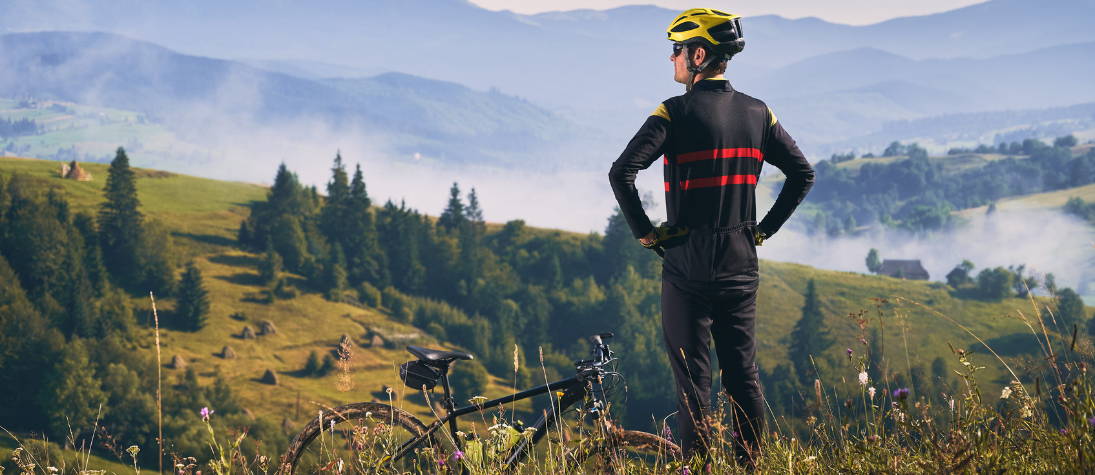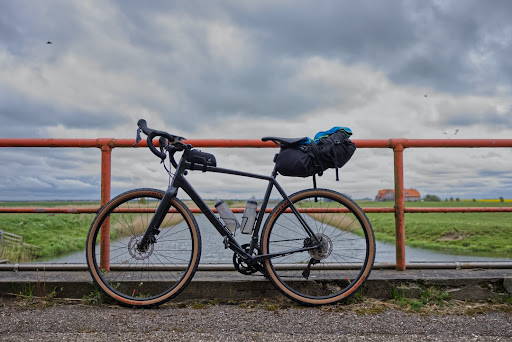What is bikepacking and how do I get started?

Image by ArtPhoto_studio on Freepik
Bikepacking is a form of cycling adventure that combines cycling and bivouacking. Unlike traditional cycle touring, which is often done on roads and with bulky equipment, bikepacking favors off-road exploration with minimalist, compact and ultra-light equipment. The main idea behind bikepacking is to cover long distances independently, while carrying the minimum equipment necessary for sleeping and eating. Bikepacking offers the flexibility, closeness to nature and ability to access remote areas that traditional cycle touring can't always offer. The popularity of bikepacking has grown exponentially in recent years.
Where does bikepacking come from?
The history of bikepacking dates back to the 1970s, when adventurous cyclists began experimenting with lightweight bags attached to their bikes to carry camping gear. However, it's only in recent decades that bikepacking has really developed as a discipline in its own right.
With the democratization of electric-assist bicycles, but also thanks to the evolution of materials related to the practice. Bikepacking panniers have become lighter, stronger and more specifically designed to withstand harsh conditions. Today, there are numerous bikepacking competitions and events around the world, attracting cyclists of all levels and nationalities. Bikepacking offers a unique experience of freedom, adventure and discovery, providing a new way to travel and reconnect with nature.
What equipment do you need for bikepacking?
Bikepacking equipment must be chosen with care. Essentials include bikepacking panniers, a lightweight tent, a sleeping bag, a ground mattress, as well as bike repair tools and appropriate clothing. Choosing the right equipment for your needs and budget is crucial to a successful bikepacking experience.

Bikepacking requires physical and mental preparation
In terms of physical preparation, bikepacking requires both cardiovascular endurance and muscular strength. Long days of pedaling require good cardiovascular fitness, while the rugged terrain and carrying of equipment require a certain amount of muscular strength. Although bikepacking is easier if you choose to set off on an electrically-assisted bike, don't underestimate the sporting aspect.
Also note that bikepacking can be mentally demanding due to the long distances, solitude, changing weather conditions and unforeseen challenges. Good mental preparation will help you stay calm and focused in all circumstances.
Planning your itinerary
When planning your itinerary, it's important to assess your level of fitness and adapt your route accordingly. Use topographical maps and GPS applications applications to plan your route, taking into account distance, altitude, water sources, food supply points and potential camping sites. In addition, it is advisable to carry out a risk assessment for each section of the route, taking into account weather conditions, terrain conditions and the possible presence of dangerous wildlife.
Organizing your bags and distributing weight efficiently
When it comes to loading and organizing equipment, it's crucial to distribute the weight evenly on the bike to avoid unbalancing the ride. The heaviest items should be placed near the center of the bike.Panniers should be organized in such a way as to facilitate access to essential items along the way. Optimizing space and reducing weight are also important, so carry only what you really need.
Here's an example of how to organize your bikepacking bags:
Handlebar bag: the ideal place to store light but bulky items. You can put your tent, sleeping bag and sleeping pad here. These items are generally not needed during the day, which means you won't need to access this bag until you've settled in for the night.
Frame bag: this bag is ideal for heavier items, as it centers the weight, helping to keep the bike stable. You can fit food, bike tools, an air pump, a repair kit from tires and a first-aid kit.
Saddle bag: use this space for a change of clothes, rain gear and other items you won't need during the day.
Fork bags (if you have them): perfect for carrying water, extra food or kitchen equipment.
Cans and canisters: these should hold your water. Cans can also be used to carry food or tools.
Top tube or cockpit bags: These are ideal for items you'll need to access regularly throughout the day. They can hold snacks, a map, a GPS, a phone, a headlamp, sunscreen, etc.
If you want to equip yourself with quality products, brands like Ortlieb specialize in bikepacking panniers.
Nutrition and hydration
Nutrition and hydration are essential on a bikepacking trip. Pack nutritious, light and easy-to-cook foods. For hydration, make sure you have the capacity to carry enough water for the duration of your trip, and plan methods for purifying water on the road.
Bikepacking safety
Safety should always be a priority on a bikepacking trip. Make sure you have a bike helmet, lights and a reflective vest to increase your visibility. Also, make sure you have a basic first-aid kit and know what to do in an emergency. Finally, always obey traffic rules and exercise caution when crossing busy roads.

Which bike is best for bikepacking?
Mountain bikes
The MTB are ideal for bikepacking on rough terrain and off-road trails. They have good suspension, wide tires for better grip and a sturdy structure to withstand shocks. The MTB are perfect for bikepacking adventures where you plan to do a lot of climbing and descending on difficult terrain.
Gravel bike
Gravel bikes are becoming increasingly popular for bikepacking. They combine the lightness and efficiency of a road bike with the ability of a MTB to ride over rough terrain. They are ideal for mixed routes that combine both tarmac and gravel trails.
Touring bikes
Touring bikes are designed to be stable and comfortable over long distances. They have a solid structure for carrying heavy loads, and usually feature numerous attachment points for luggage racks and water cans. They are good choices for long adventures on paved roads or relatively smooth terrain.
Bikepacking: to conclude
Bikepacking is all about ultra-light, adventurous travel! It offers the chance to discover new regions, new cultures and to reconnect with nature. In this rapidly democratizing field, gravel bikes are often favored for their versatility compared with other types of bike.
Although it can be both physically and mentally demanding, with the right preparation and a positive mindset, bikepacking can become an unforgettable experience. So get ready, get on your bike and get ready for adventure!